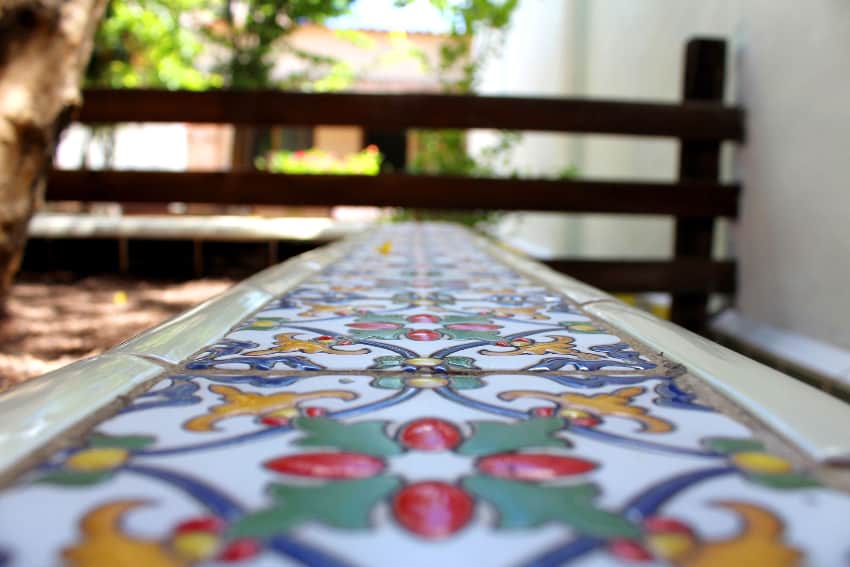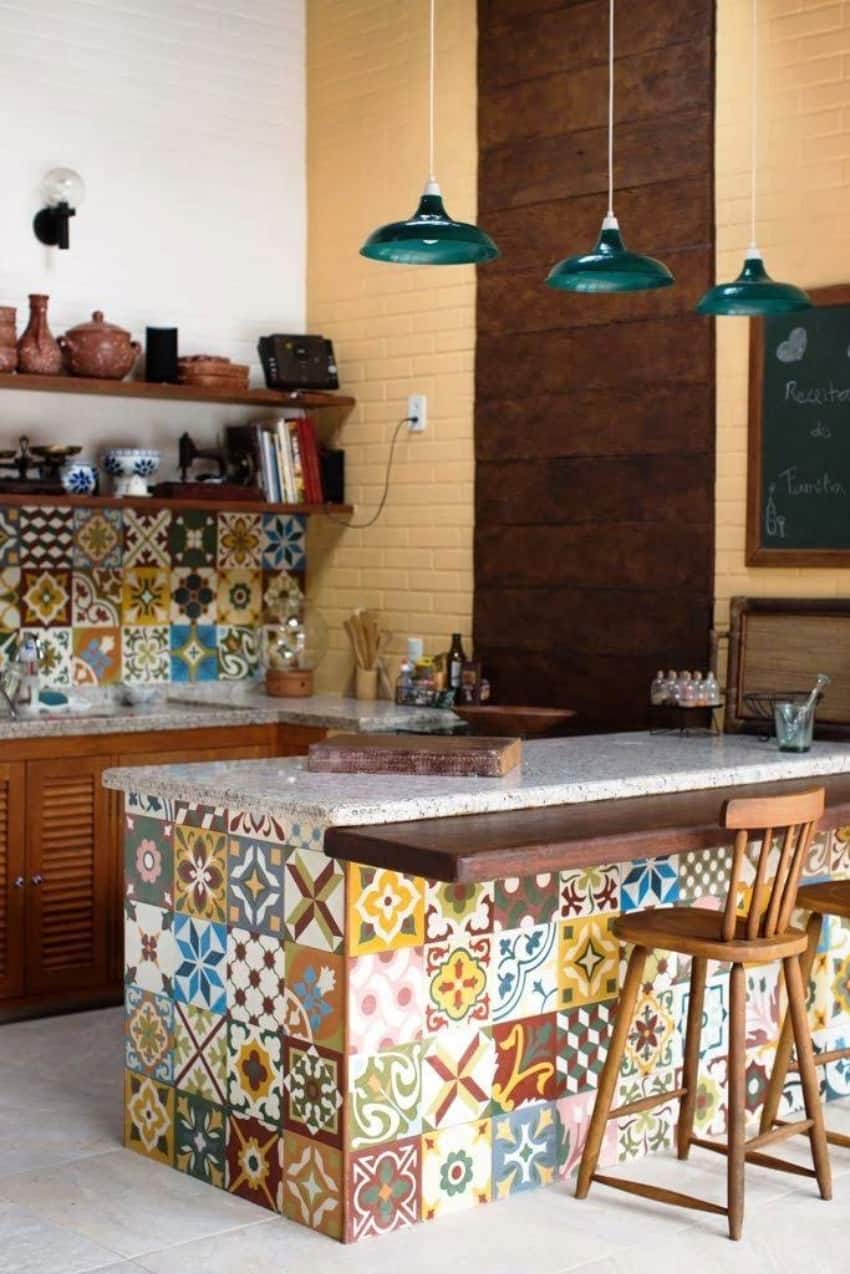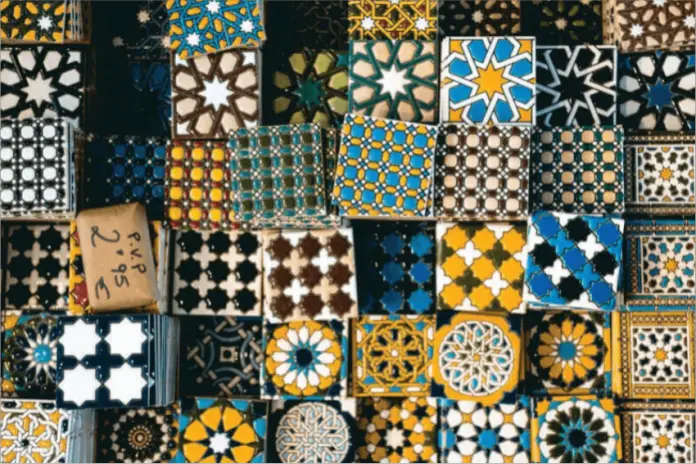Mexican Talavera tile is an old art form that vibrates with its distinctive architectural charm. Let’s explore its history and how its enduring allure can revitalize your home.
Talavera ceramics were brought to Mexico in the late 16th century by Catholic monks who needed tiles for adorning the many churches they were building in the New World. They particularly wanted the Muslim style common in Spain since the 12th century but importing tiles from Spain to Mexico was unfeasible.

The clergy then sought to promote local Mexican production and this prompted the migration of skilled artisans from the city of Talavera de la Reina, in Spain, who settled in Puebla and taught the craft to Mexican workers.
As the practice of beautifying convents and churches grew, this custom became widespread among those who had the purchasing power to decorate their homes with these precious tiles. Puebla’s abundant clay resources, coupled with soaring demand, transformed its Talavera production into a resounding success, and the burgeoning community of potters extended to the neighboring state of Tlaxcala.
Acknowledging this surge, the viceroy established regulations to ensure the industry’s quality, which formalized this art form, and appointed the city of Puebla as the preeminent pottery center in New Spain.
This secured the tradition for a long time but when Mexico gained independence in 1821, the viceroy’s ordinances became obsolete. Some manufacturers, eager to meet high demand, shifted towards mass production. Until the 1990s, when a conservation effort led to the creation of a Mexican Talavera Regulatory Council and earned a Denomination of Origin status to protect the authenticity of the Talavera pieces made with the original 16th-century methods in the states of Puebla and Tlaxcala.
Furthermore, in 2019, UNESCO inscribed the process for making artisanal Talavera in Puebla and Tlaxcala in Mexico and Talavera de la Reina and El Puente del Arzobispo in Spain on the Representative List of the Intangible Cultural Heritage of Humanity. A testament to the enduring legacy of this art form on both sides of the Atlantic.
Authentic Talavera tiles are known for their intricate hand-painted designs, vibrant colors, and milky-white glaze. These captivating designs often feature floral motifs, geometric patterns, and scenes inspired by nature and mythology. The painted patterns are distinguished by a tactile quality, rising slightly above the ceramic base.
In its early days, designs over an ivory white background were only painted in cobalt blue, as it was the most expensive pigment, thus contributing both quality and prestige. The use of Talavera tiles was such a status symbol for families and churches that people used to say that not aspiring to build a house covered in tiles amounts to not aspiring much in life.
The color palette has evolved but only allows six official colors: blue, yellow, black, green, orange, and mauve. Yellow is created from antimony, blue is made from cobalt oxide, orange comes from hematite, copper produces green, and the enamel top coat contains tin and lead, resulting in Talavera’s famous endurance. Each Talavera item is fired once to harden the clay and then again after painting to develop and set the colors.
When shopping for authentic pieces, look for these signs: a portion of the bottom surface is always left unglazed to expose the red terracotta. It is there where you will find the handpainted manufacturer logo, artist initials, factory location, and the official certification hologram.
Incorporating Talavera tiles into home decor celebrates a centuries-old tradition that sparks fun and creative endeavors. When shopping for these tiles, you’ll be amazed at the hundreds of choices available. Layout your design carefully, considering both color coordination and pattern selection. You can mix and match tiles to create a customized look that suits your style.

Some ideas for how to incorporate the beauty of Talavera tiles into your home decor:
- Kitchen Longevity: Transform your kitchen into a vibrant and inviting space by using Talavera tiles as a colorful backsplash, countertop, or kitchen island. These sturdy tiles are famous for never losing their shine.
- Bathroom Accents: Add the vibrant flair of Mexican artistry to your bathroom by using Talavera tiles on countertops, mirror frames and shower walls. Talavera sinks also make stunning accent pieces.
- Patio Oasis: Elevate your outdoor area by covering swimming pools, fountains, walls, tables and planters with Talavera tiles. Their vibrant colors and patterns will create a gorgeous backdrop for your gatherings.
- Staircases and Floors: Make a striking statement using Talavera tiles on stair risers or as a border along floors, creating an elegant and visually appealing transition.
Talavera tiles add a distinctively Mexican touch to your home and celebrate a centuries-old tradition. These tough, shiny tiles are a piece of history, a testament to craftsmanship, and a vibrant expression of artistry that can elevate the ambiance of any space. Whether you opt for a subtle accent or a bold statement, Talavera tiles will brighten your home with unique and enduring charm.
Sandra is a Mexican writer and translator based in San Miguel de Allende who specializes in mental health and humanitarian aid. She believes in the power of language to foster compassion and understanding across cultures. She can be reached at: sandragancz@gmail.com
